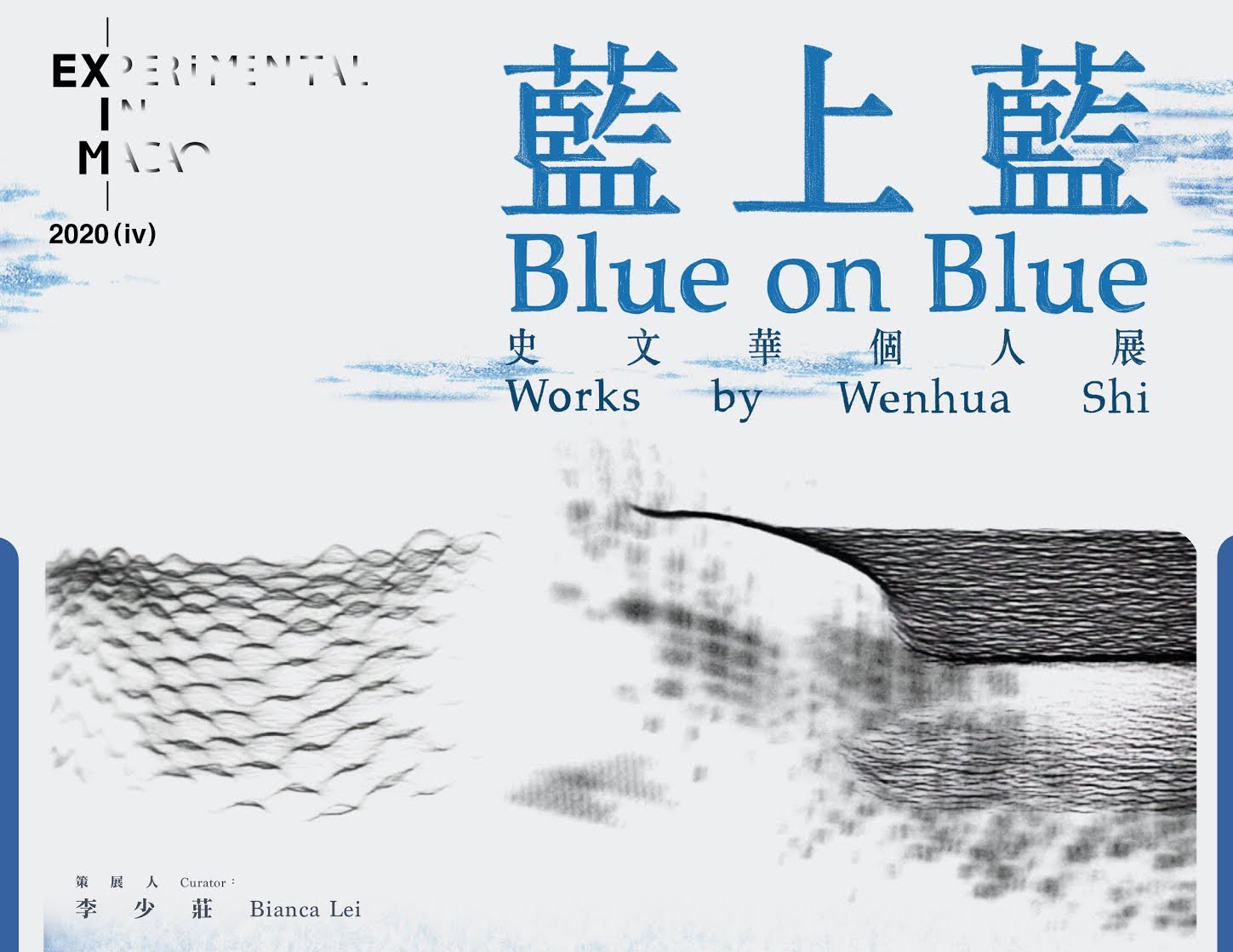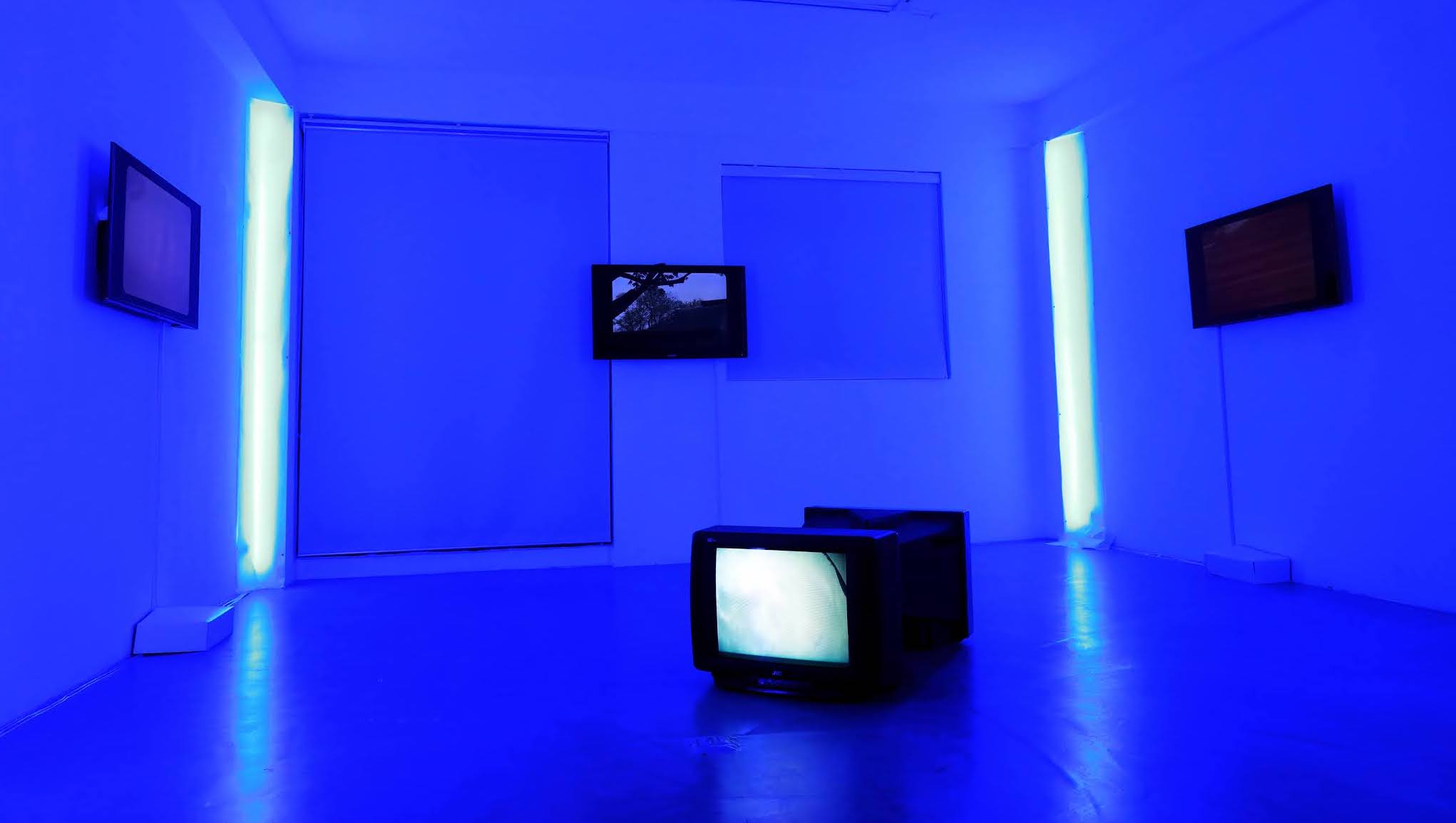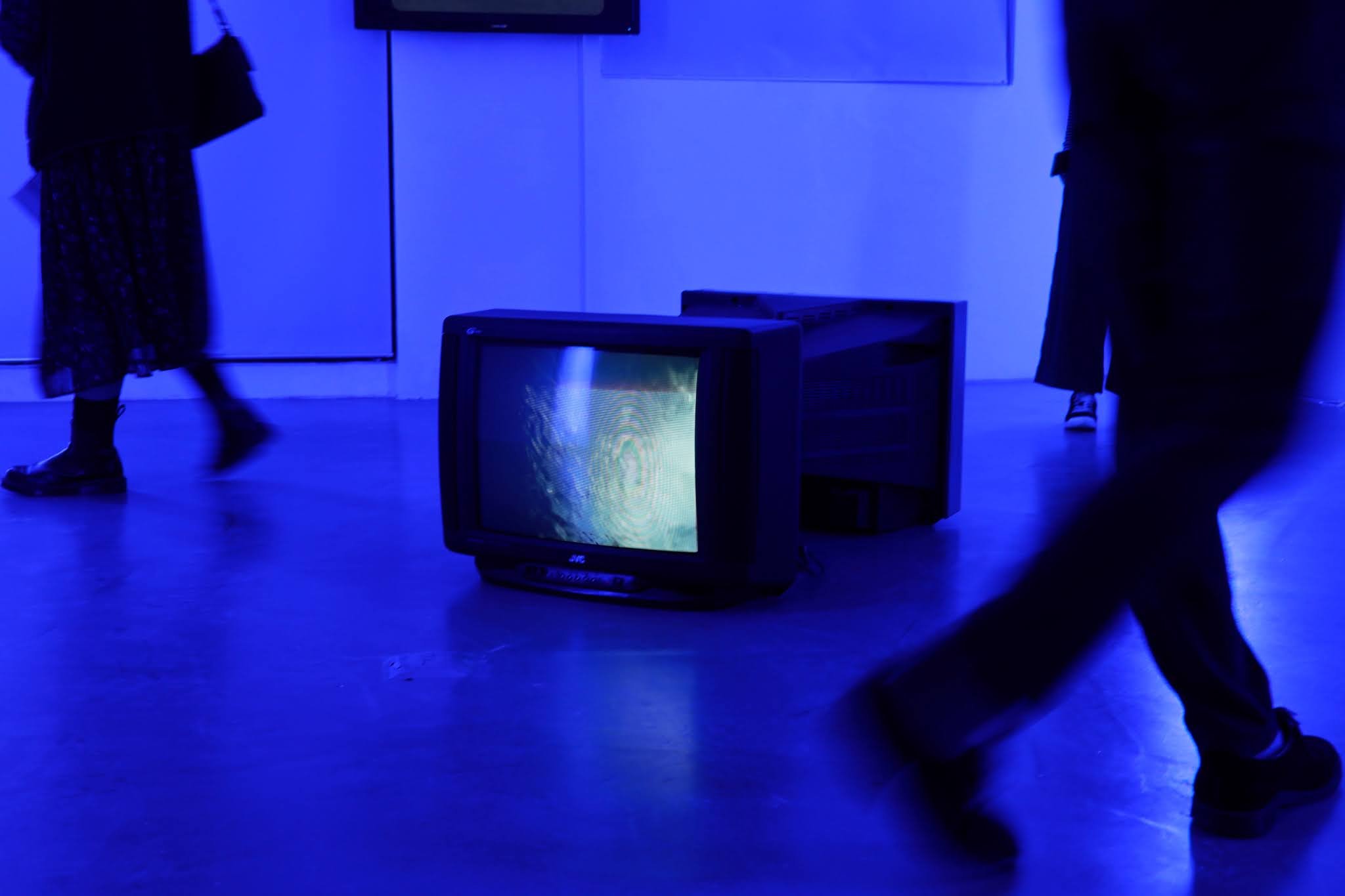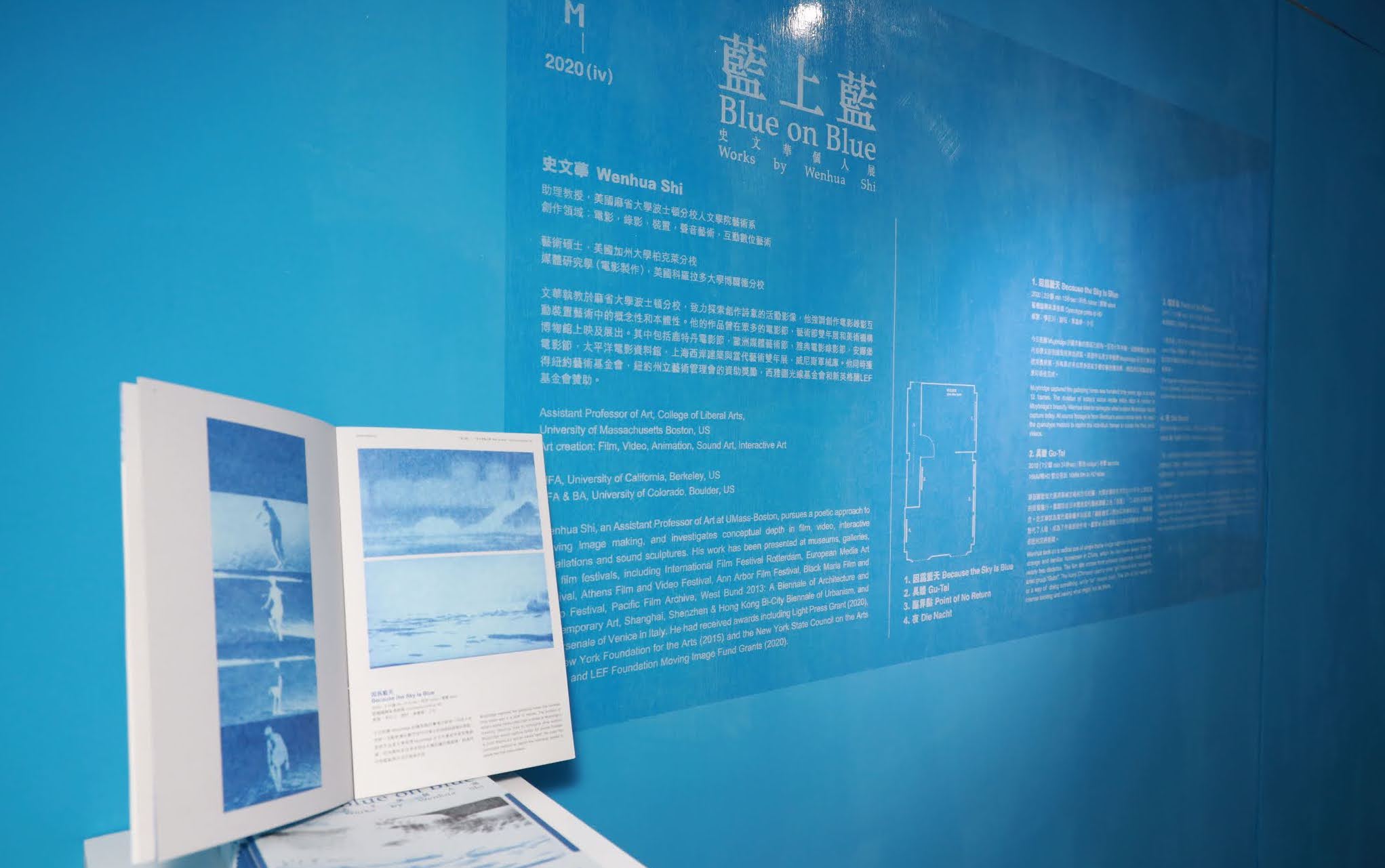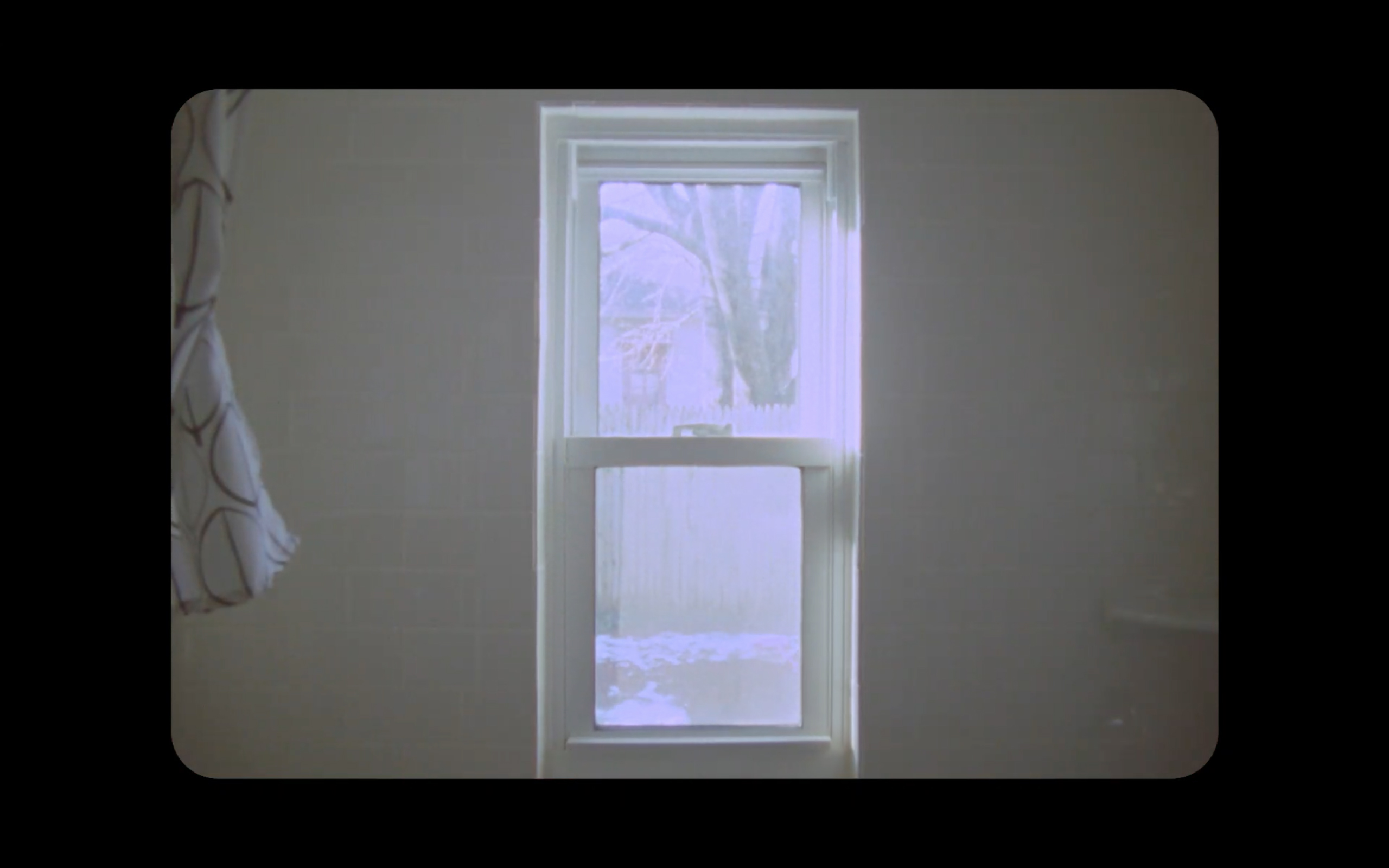Description
Solo Exhibition
Ox Warehouse
牛房倉庫
Macau, Macau
23.10. 2020
Oct. 24 - Dec. 06, 2020
Exhibition Blue on Blue Catalog
前言
策展人 Curator /李少莊 Bianca Lei
「藍上藍」──史文華個人展是EXiM2020第三個展覽,華裔藝術家史文華在美國從事實驗影像創作和教學多年。這次在一樓和二樓展出六個作品,展示形式以單頻、多頻、投影和裝置呈現。
一樓共展出《因爲藍天》、《具體》、《臨界點》和《夜》四部作品。作品《因爲藍天》是用了一種古典晒印圖片的技術──藍晒法(Cyanotype), 將手機視頻逐幀印製出來,再重新以定格動畫的方式製成影片。藝術家帶著觀眾從當下最普及的數碼影像,回到製作靜態照片(藍晒法)和動態影像(定格動畫)的最初期, 最後又以高清視頻呈現。由非物質的媒介轉化成可觸碰的紙本物質圖像(鐵鹽與光的作用),再以逐幀動畫方式(有別於常見影片的跳動節奏)拍攝成數碼動態影像, 一趟關於影像發展的回溯之旅。
同層作品《具體》,標題取自二戰後在1954年成立的日本藝術團體的名字「具体」(全名是:「具体美術協会Gutai Bijutsu Kyōkai」,也稱為具體派)。 具體派藝術家經常以身體作為工具或身體與工具結合進行藝術創作。史文華認為:「當代攝影機早以超越了攝影機是人眼的延伸傳統說法,攝影機替代了人眼」。攝影機的鏡頭如藝術家的眼睛,記錄了他的當下, 景物的紋理和移動的身影等等。而經剪輯的影像就顯露出一種竭力追尋那些已逝的眼前,如腦海中跳動的碎片一樣,早已成為混雜式的圖型,重複地迴盪著,閃現著。
作品《夜》的外文名字是以德文Die Nacht標示,是受到史特勞斯(Richard Strauss)在1885年創作的同名藝術歌曲啟發,也是影片的背景歌曲, 而此曲的歌詞來自於奧地利詩人吉爾姆(Hermann von Gilm)1864年的同名詩歌。陽光抺過玻璃窗,也短暫地帶進了室內並勾劃出內裡的場景。 作品由光引領著,看到了時間流走,那一抺又一抺的光影讓眼球感受到有溫度的絲質觸感和也誘導出心底的詩意韻味,這就是光影和時間書寫的詩歌。 《臨界點》是一個三頻錄像作品,以信號處理器扭曲和改變原有的視聽,產生出抽象的線條和圖案,史文華說:「不可逆轉的影像調變。」與此同時,也讓我們看到數碼技術正在帶領著我們進入到一個全新但難以捉摸的境域。
二樓是一個被藍光渲染的空間,作品包括《水上行舟》和《時間感》兩組錄像裝置。《水上行舟》是藝術家一次重遊武漢東湖之時所創作的, 表達城市發展不但使環境變遷,也產生了很多污染問題。當下看到的,已跟孩童時代的兒歌¹所描述的景致形成了鮮明的對比──「想不到海山竟多變幻, 再也不見舊時面」²。作品是利用两部GoPro攝影機固定在两技船槳上,隨著划船的動作,帶著觀眾浸入湖水之中,緊接又回到湖面之上, 以一種呼吸的頻率上上落落。這種將相機設置在一處不尋常的視角,翻轉了我們慣常的觀視體驗,似曾相識,但又不一樣的感受和認知。 而《時間感》是《具體》和《夜》的增強版,更加深入地抒發對時間飛逝的情懷,流動的光線和景物的質感仍然是主角。
史文華用影像寫詩,時間是很多作品的重要元素,而光線就成為演繹的手段。總能令觀看者走進一個沉思空間,緬懷時間的流逝, 更慨歎逝去的不只是時間,周遭的人和景物都無人倖免,同時也反思進步和發展對人的影響。觀賞他的作品,需要靜心品味和沉澱思量。 雖然螢幕是光滑的,但是作品令視覺和聽覺撫摸到起伏的痕跡,感覺到景物的質地。在作品的文字敘述中史文華提及多位先鋒實驗創作大師, 包括白南準( Nam June Paik)、蓋瑞‧希爾( Gary Hill)、喬納森‧梅卡斯(Jonas Mekas)、菲利浦‧所羅門(Phil Solomon)和日本的具體派等, 本著向他們致敬之時,同時將個人對實驗影像的美學精髓提煉出來,進行一次又一次的探究,無論是創作方法或媒體本身。
李少莊 2020/10
1《讓我們蕩起雙槳》,1955年電影《祖國的花朵》的主題曲,劉熾作曲,喬羽作曲。
2《風雲》,1980年香港電視劇《風雲》的主題曲,顧嘉輝作曲,黃霑作詞。
Foreword
Text by Bianca Lei
EXiM2020 proudly presents Blue on Blue - Shi Wenhua Solo Exhibition as the third exhibition in the 2020 series. Shi, a Chinese diaspora artist, is established as a fearless Avant Garde in the moving image experimental field and contemporary art practices. Currently he is an assistant professor at University of Massachusetts Boston. During the exhibition, EXiM 2020 installed his most recent works. Six pieces in the format of single channel or multi-channel projections and installations are located at the 1st and 2nd floor of the exhibition hall on view from October 24 through December 6.
Shi created Because the Sky is Blue with Cyanotype, an antiquated photographic chemical printing process, commonly known as blueprints. The artist reproduced animation stills from mobile short video clips frame by frame and then this process repurposed video into a sequence of stills. In this work, the artist takes audiences on a time-travelling journey, from today’s wide-spread digital memes back to the century-old period of Cyanotype still photography, through animated rephotographing, finally returning to high-definition video. It, seemly, is a retrospective voyage of image development, as the non-material medium has been transformed into tangible image on paper with potassium ferricyanide and ultraviolet ray sunlight effects. Yet, the artist, painstakingly, altered the rhythm of the original video sequence through frame-by-frame animation.
Gutai is named after Japanese post WWII art movement Gutai Bijutsu Kyōkai, aka the Gutai Group, founded in 1954. Gutai artists often used the artists’ bodies as a tool or integrating both the body and tool in artistic practice. “The ubiquitous cameras have long surpassed the traditional notions where the camera is an extension of the human eye, in fact the camera has replaced the human eye,” Shi notes. The camera lens became the artist’s eyes, capturing his present moment, the texture within landscapes, the moving figures and so on, while in-camera images reveal a kind of eagerness to search for those moments passed, which, like fragments in the mind, have become mélange pictures, reverberating and flashing repeatedly.
The work Die Nacht (The Night) bears a title from a German Lieder (art song) composed by Richard Strauss in 1885. The melodramatic singing accompanies this cinematic piece as well. Its lyrics come from a poem of the namesake title, written in 1864 by Austrian poet Hermann von Gilm. Sunlight shines through the glass window into the interior, briefly delineating the scene inside. Guided by light, the work presents how time flows away; the lights and shadows make our eyes feel warm with silky touches while also inducing our elegiac feelings from within. It’s a verse written with light and shadow, and time. Die Nacht, along with Gutai, Point of No Return Because the Sky Is Blue is displayed on the first floor.
The three-channel video installation, Point of No Return, was created by an electronic signal processor to distort the original audiovisual images into abstract lines and patterns -- "irreversible video modulation" as per Shi Wenhua. At the same time, the piece shows us that digital technology is leading us into a new but enigmatic world.
The immersive blue light illuminates the second floor, where two video installations are presented, Water Walk and Senses of Time. Water Walk was created when the artist revisited East Lake in Wuhan. The work tries to draw people’s attention to urban transformation and the problems resulting from radical city development. The sceneries shown on the screen are in stark contrast to those depicted in a children's song from the artist’s childhood – it’s like “Unexpectedly the oceans and mountains have changed so much, beyond my recognition." This piece was shot with two GoPro cameras mounted on boat paddles as they are rowed on East Lake, so that following the movements the audience repeatedly go into and out of the lake like a breathing pattern. By setting up an unconventional camera point of view, the artist subverts our accustomed watching/viewing experience, creating for us a familiar yet quite different perceptive experience. On the other hand, depicting more profoundly the lyrical and poetic passage of time, Senses of Time can be regarded the continuation of Gutai and Die Nacht. Flowing light, shadow and textures of landscapes still the centerpieces.
Shi Wenhua writes poems using image. Time is an important theme in many of his works, and light becomes his interpretation medium. He can always bring viewers into a contemplative space, together to lament upon the passage of time as well as the people and landscapes around, while also reflecting on the impact of progress and development on humans. It indeed takes a tranquil mind and deep contemplation to appreciate his work. Despite a smooth screen, the work allows us to touch, through visual and auditory senses, the undulating traces as well as feel the textures of landscapes. In the description of his works, Shi mentions many influential pioneering experimental artists, including Nam June Paik, Gary Hill, Jonas Mekas, Phil Solomon and the Japanese Gutai Group. He means to pay tribute to them while also drawing inspiration from the aesthetic of quintessential experimental imaging, for continuous exploration whether it be the creative method or cutting edge and obsolete media.
1 “Let Us Row The Boat Together”, theme song of the 1955 movie "Flowers of the Motherland", composed by Liu Chi, with lyrics by Qiao Yu
2 "The Land Is Mine", theme song of the 1980 Hong Kong TV drama series "The Land Is Mine", composed by Joseph Koo, with lyrics by James Wong.
